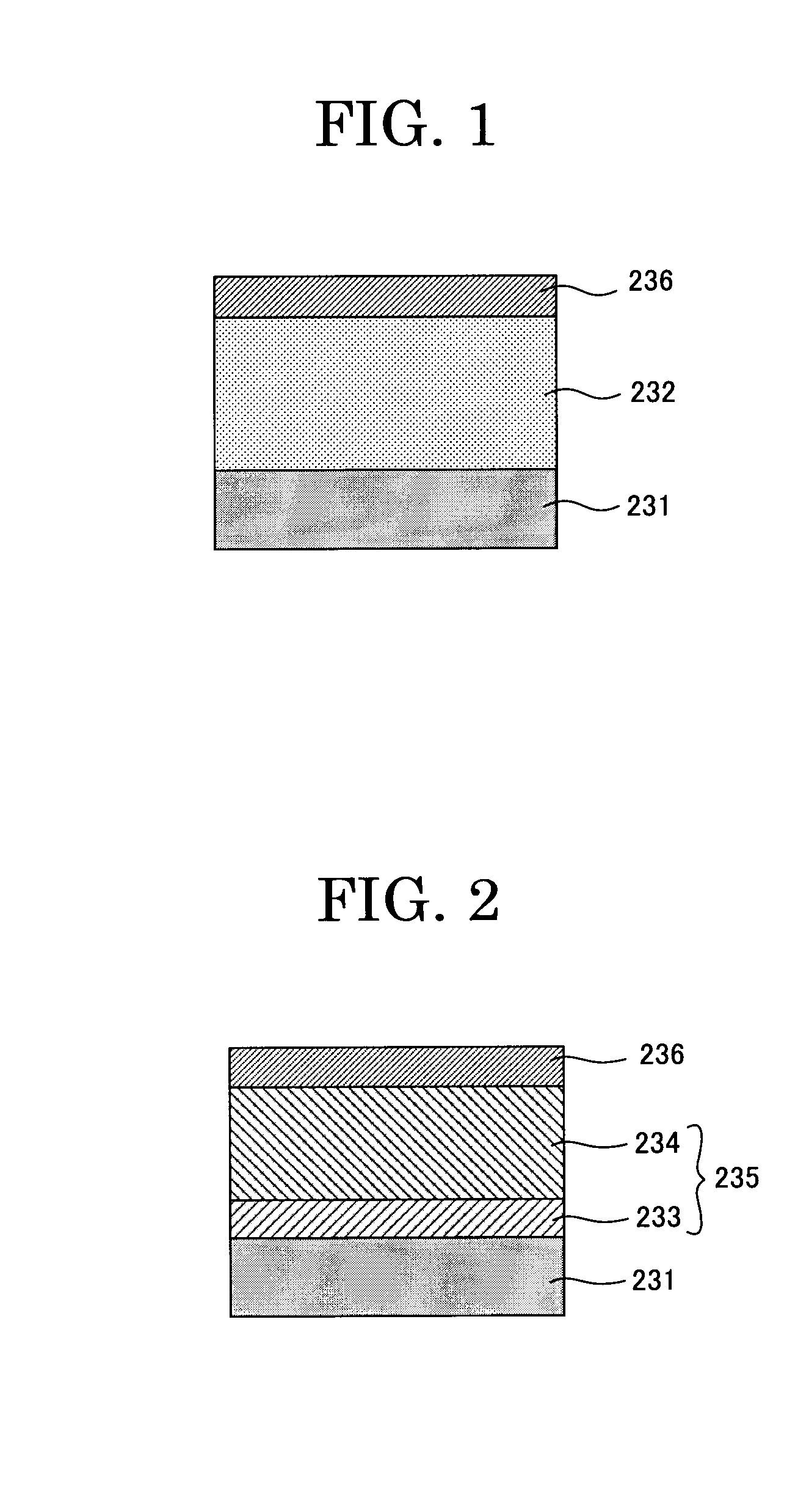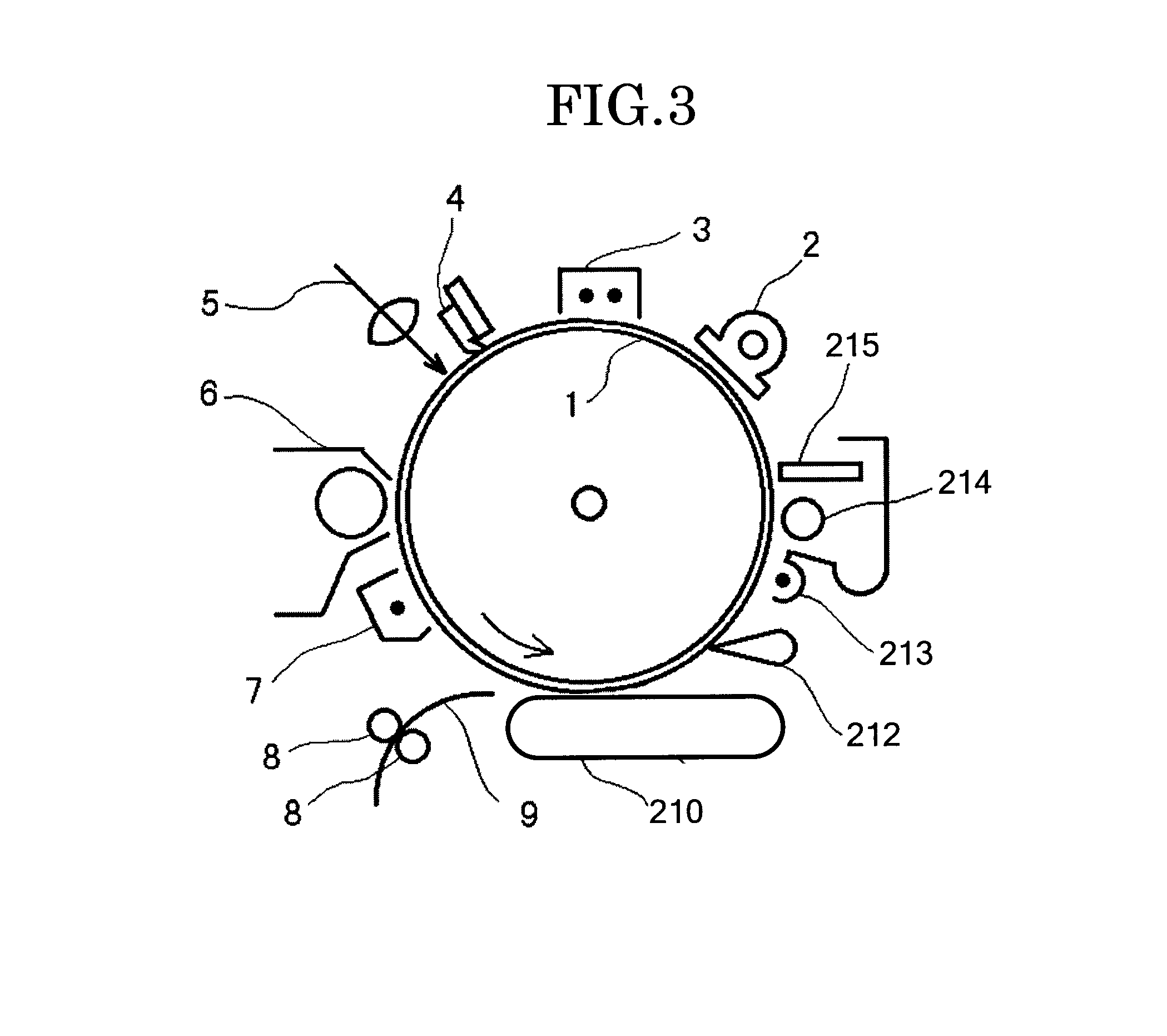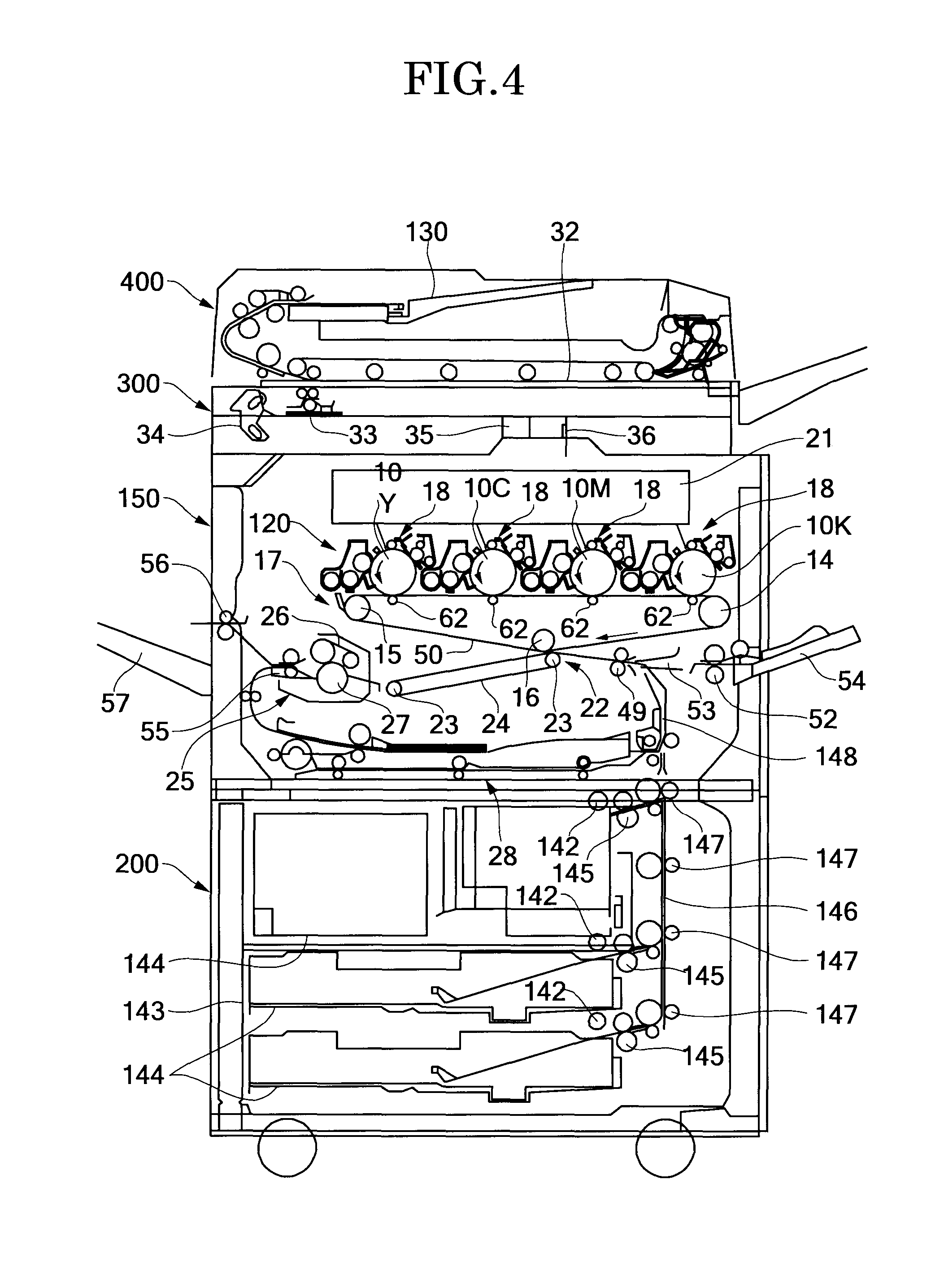Image forming apparatus, image forming method, and process cartridge
a technology of image forming and process cartridge, which is applied in the direction of electrographic process, corona discharge, instruments, etc., can solve the problems of high exchange rate, high cost, and high cost of photoconductors, so as to prevent abnormal images, stable forming high-resolution images, and high abrasion resistance
- Summary
- Abstract
- Description
- Claims
- Application Information
AI Technical Summary
Benefits of technology
Problems solved by technology
Method used
Image
Examples
examples
Synthesis Example of Monofunctional Compound Having a Charge Transporting Structure
[0370]The monofunctional compound having a charge transporting structure of the present invention can be synthesized by a method described in Japanese Patent (JP-B) No. 3164426. On example of the synthesis method will be described below.
(1) Synthesis of Hydroxy Group-Substituted Triarylamine Compound (Represented by the Following Structural Formula B)
[0371]In a vessel, 240 mL of sulfolane was added to 113.85 g (0.3 mol) of a methoxy group-substituted triarylamine compound (represented by the following Structural Formula A) and 138 g (0.92 mol) of sodium iodide, and the mixture solution was heated to 60° C. in a nitrogen stream. Into the mixture solution, 99 g (0.91 mol) of trimethylchlorosilane was delivered by drops for 1 hour, and the mixture solution was stirred at a temperature of about 60° C. for 4.5 hours, and then the reaction was stopped. To the reaction solution, about 1.5 L of toluene was ad...
synthesis example i-1
—Synthesis of Titanyl Phthalocyanine Pigment—
[0379]In a vessel, 292 g of 1,3-diiminoisoindoline was mixed with 2,000 mL of sulfolane, and 204 g of titanium tetrabuthoxide was delivered by drops into the mixture solution under a nitrogen stream. Upon completion of the dripping, the temperature of the mixture solution was gradually raised to 180° C., and the mixture solution was stirred for 5 hours while keeping the reaction temperature ranging from 170° C. to 180° C. to perform a reaction. After completion of the reaction, the reaction solution was left to cool, and then the obtained precipitate was filtered, and the filtered precipitate was washed with chloroform until the powder turned into blue color.
[0380]Next, the filtered precipitate was washed with methanol several times, further washed with hot water of 80° C. several times, and then dried to thereby obtain a coarse titanyl phthalocyanine.
[0381]The obtained titanyl phthalocyanine was dissolved in 20 times its volume of a conc...
production example i-1
—Preparation of Latent Electrostatic Image Bearing Member—
[0391]Over the surface of an aluminum cylinder having a diameter of 100 mm, an undercoat layer coating solution containing the following composition, a charge generating layer coating solution containing the following composition, and a charge transporting layer coating solution containing the following composition were sequentially applied and dried to thereby form an undercoat layer having a thickness of 3.5 μm, a charge generating layer having a thickness of 0.3 μm, and a charge transporting layer having a thickness of 23 μm on the cylinder.
[0392]Over the surface of the obtained charge transporting layer, a surface layer coating solution A and a surface layer coating solution B each containing the following composition were sequentially applied by spray-coating and then the cylinder surface with the surface layer coating solution A and the surface layer coating solution B applied thereon was irradiated with a light beam un...
PUM
| Property | Measurement | Unit |
|---|---|---|
| Bragg angle 2θ | aaaaa | aaaaa |
| angle | aaaaa | aaaaa |
| angle | aaaaa | aaaaa |
Abstract
Description
Claims
Application Information
 Login to View More
Login to View More - R&D
- Intellectual Property
- Life Sciences
- Materials
- Tech Scout
- Unparalleled Data Quality
- Higher Quality Content
- 60% Fewer Hallucinations
Browse by: Latest US Patents, China's latest patents, Technical Efficacy Thesaurus, Application Domain, Technology Topic, Popular Technical Reports.
© 2025 PatSnap. All rights reserved.Legal|Privacy policy|Modern Slavery Act Transparency Statement|Sitemap|About US| Contact US: help@patsnap.com



